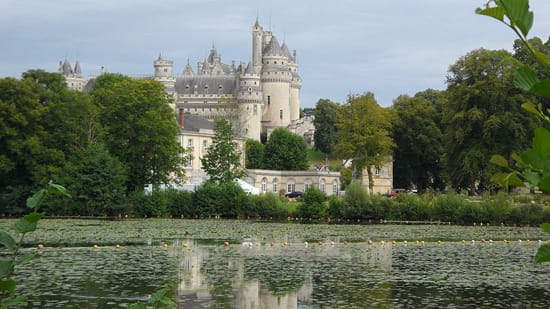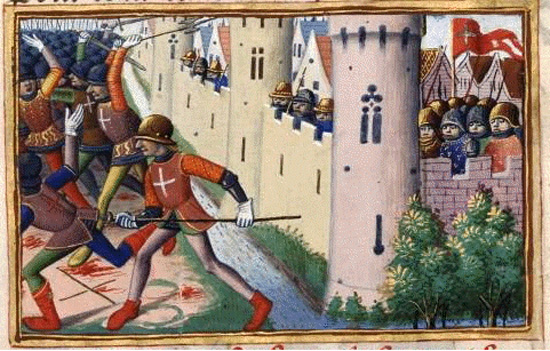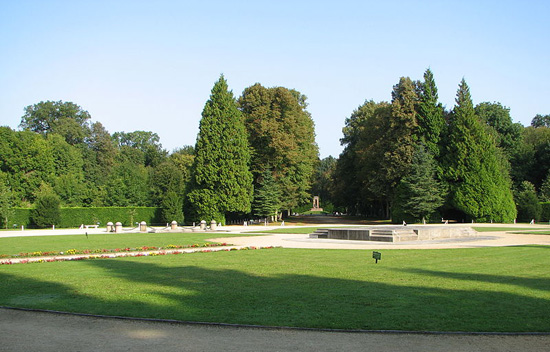Capture at Compiègne

Joan of Arc was captured by the Burgundians at the siege of Compiègne in 1430 in controversial circumstances - did the city close the gates too soon and strand her outside the walls? Below is a painting of the siege from a late 15th century French illustrated book of poems about the wars with England. The poems were by Martial d'Auvergne.

After her capture, over the next six months, she was transferred by the Burgundians from prison to prison before being purchased by the English and put on trial in Rouen.
Compiègne thus occupies a complex place in French history. If it was where Joan of Arc was captured and possibly betrayed, then it also was where the French forced the Germans to sign the Armistice in 1918. The moment was heavy in symbolism when Germany returned the favor in 1940 when they forced a defeated France to sign an Armistice, in the same railroad carriage no less as in 1918, but with the seats swapped this time. Worse, Compiègne became the site of Royallieu internment camp during the Nazi occupation.
As the tides turned and the Allies invaded Germany, the railroad carriage was taken to Germany, where it was destroyed by the SS rather than allow it to be recaptured. A replica is now at the memorial site in the glade in the Compiègne Forest, shown below.

On the other side of the Forest is the extraordinary Château de Pierrefonds (shown at top). It didn't play a role in the wars mentioned above, but it has popped up in the film The Messenger: The Story of Joan of Arc, as well as in Les Visiteurs, the BBC series Merlin, and so on, as the perfect archetypical late medieval French castle. It was a ruin for centuries, which is how Corot found it (and painted it) in the 1860's, but Napoleon III had it restored subsequently under the supervision of Viollet-le-Duc.
